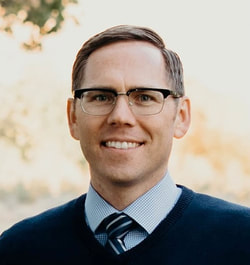|
This is the third blog post where I share my contributions to the Extension Committee on Organization and Policy (ECOP) Innovation Task Force's writing assignments. In this writing assignment I try to answer the question: What would encourage the process or willingness of an organization to embrace change—change that would create a culture of innovation? Please read over my response and leave a comment below with your thoughts, critiques and insights. I believe in working out loud, if you read this post please let me know what you think. A culture is a living thing, powered by and kept up to date by the people who are encouraged to be, in a meaningful way, part of it. - Micah Solomon John Kotter provides terrific insight into how culture changes:
How does culture change? A powerful person at the top, or a large enough group from anywhere in the organization, decides the old ways are not working, figures out a change vision, starts acting differently, and enlists others to act differently. If the new actions produce better results (if not, keep iterating & trying new actions), if the results are communicated and celebrated, and if they are not killed off by the old culture fighting its rear-guard action, new norms will form and new shared values will grow. What does NOT work in changing a culture? Some group decides what the new culture should be. It turns a list of values over to the communications or HR departments with the order that they tell people what the new culture is. They cascade the message down the hierarchy, and little to nothing changes. Ways Extension can act differently to nurture a culture of innovation:
Ways Extension can enlist others to act differently:
Thoughts on Change On the subject of change, here are some helpful insights from the book Switch: How to Change Things When Change Is Hard. People with the large buckets ate 53 percent more popcorn than people with the medium size. Bigger container = more eating. If you want people to eat less popcorn, the solution is pretty simple: Give them smaller buckets. How can we apply this concept in Extension? You don’t have to worry about their knowledge or their attitudes. You can see how easy it would be to turn an easy change problem (shrinking people’s buckets) into a hard change problem (convincing people to think differently). And that’s the first surprise about change: What looks like a people problem is often a situation problem. The Elephant & Rider Metaphor If you’re contemplating a change, the Elephant is the one who gets things done. To make progress toward a goal, whether it’s noble or crass, requires the energy and drive of the Elephant. And this strength is the mirror image of the Rider’s great weakness: spinning his wheels. The Rider tends to overanalyze and overthink things. The Rider provides the planning and direction, and the Elephant provides the energy. When the Elephant really wants something, the Rider can be trusted to find rationalizations for it. The Rider has his own issues. He’s a navel-gazer, an analyzer, a wheel-spinner. If the Rider isn’t sure exactly what direction to go, he tends to lead the Elephant in circles. To change behavior, you’ve got to direct the Rider (middle management) (employees), motivate the Elephant, and shape the Path (vision & mission of the organization). If you can do all three at once, dramatic change can happen. Note: Knowledge does not change behavior. In Extension we know this all too well...we have horticulture agents with terrible gardens teaching master gardener workshops, overweight 4-H agents teaching healthy living programs, divorced FCS agents teaching marriage classes and the list goes on. More book notes can be read at: sivers.org/book/Switch
0 Comments
Leave a Reply. |
Paul Hill, Ph.D.I design, plan, and evaluate economic development programs for Utah State University. Archives
September 2022
Search this site:
|


 RSS Feed
RSS Feed
